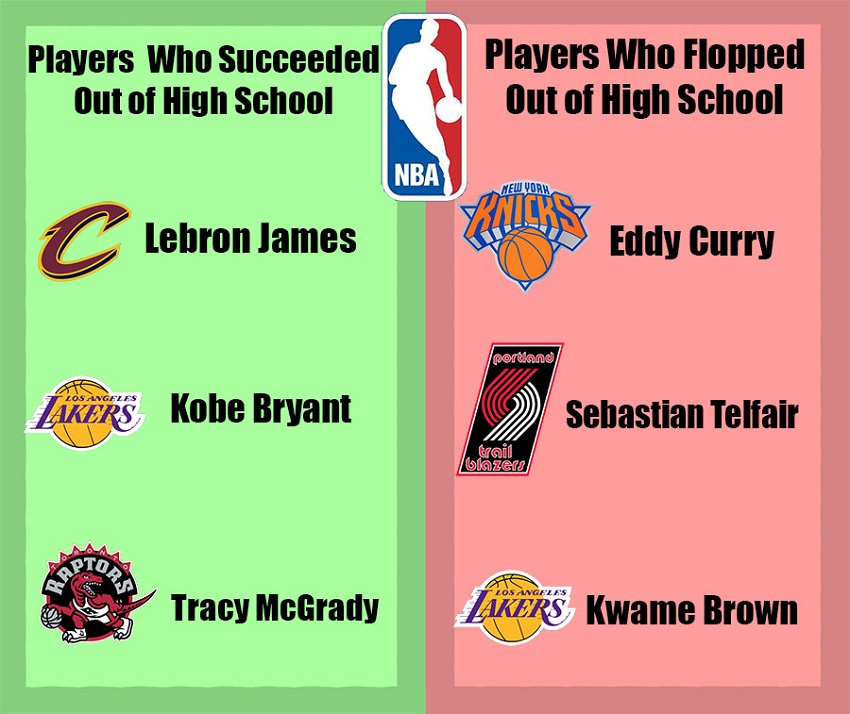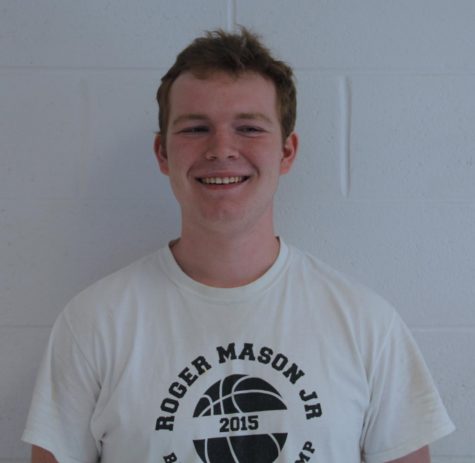Too Many High School Athletes Skip College for NBA
November 21, 2018
With the NBA creating the G-League path, a developmental league for NBA players, which pays elite prospects $125,000 to play in the G-League, it begs the question, should the “one and done” rule be abolished?
The “one and done” rule requires high school basketball players to play one year in college before heading to the NBA draft. This rule was implemented in 2006 by former NBA commissioner David Stern, with the last player drafted out of high school being Andrew Bynum, who was picked 10th overall by the Lakers in the 2005 draft.
The “one and done” rule had been followed without any controversy until recently, when Anfernee Simmons, a top 15 prospect of the class of 2018, decided to enter the NBA draft his senior year, knowing that if he was drafted, he would have to play his first year in the G-League. Simmons was drafted by the Portland Trail Blazers, causing a lot of backlash from the NBA community, with fans asking commissioner Adam Silver to abolish the rule. On July 7, 2018, Silver acknowledged the importance of this issue and announced they will look over the “one and done” rule during the 2022 offseason.
But what many fans may not see is that the “one and done” rule helps players by allowing them to experience higher education and should therefore remain in place.
Going pro after high school can ruin a player’s career. Out of the 45 players drafted out of high school, 36 of them were drafted in the first round, with three of them being number one overall picks. But only a handful of them have been successful in the NBA, just 10 of those players have had an all-star appearance.
Even with a stellar career in high school, skipping college can ruin a career. Sebastian Telfair is a prime example. Telfair entered the 2004 draft with a lot of hype, close to the hype that scouts gave LeBron James (another high school draftee). He was taken 13 overall by the Portland Trail Blazers in the draft and then his career went downhill. He opened his rookie year scoring a poor 6.8 points per game while shooting a low 39 percent from the field.
Going to college could have changed the trajectory of Telfair’s career. He initially committed to the University of Louisville, but after a murder took place in his apartment complex, he opted to go pro after high school. If Telfair went to college, he could have had hall of fame coach Rick Pitino to prepare him for the NBA.
Telfair is a clear example of a career gone wrong, but there are many other instances when young players are not mentally prepared for the money they will receive in the NBA. Take Eddy Curry, he was taken fourth overall in the 2001 NBA draft by the Chicago Bulls and was instantly given a $2.5 million contract. And before the 2005 NBA season, Curry was given a hefty six year, $60 million contract by the New York Knicks, who acquired him via a sign-and-trade agreement.
That money was not spent responsibly because, by 2009, Curry’s $4 million home in Chicago was foreclosed. He owed $22,000 in mortgage payments. In 2010, Curry was forced to pay $1.2 million because he was in debt from his luxury lifestyle and New York home. Curry, like many young high schoolers, was not ready for an NBA contract and the lifestyle and pressures that come along with it. These young players need to attend college where they can learn how to manage their money, rather than end up in debt due to frivolous purchases.
NBA superstar Ben Simmons argued in the 2016 Showtime documentary, “One and Done,” that these athletes have no use for college because they spend most of their time playing basketball and not learning any academic skills anyway. But many NBA players, like Shaquille O’Neal, Jaylen Brown and Shane Battier, refute that argument.
Shaquille O’Neal spent three years at Louisiana State University before going to the NBA and in the midst of his championship run with the Los Angeles Lakers, O’Neal earned a doctorate in education–yeah, that’s right, that goofball know as Shaq is a doctor. Jaylen Brown was a “one and done” player at the University of California, but he enrolled in many graduate level courses and was even part of the Berkeley chess team. Now being in the NBA, Brown gives speeches at Harvard and Yale about the importance of education. And Battier spent four years at Duke University with a 3.5 GPA, graduating with a degree in religious studies. All of these players recognized the value of education while also preparing themselves for successful professional play.
While many players like LeBron James, Kobe Bryant and Kevin Garnett have been very successful coming out of high school, there are too many failed NBA careers that ruined players because they were not physically or mentally ready. With a year or two of college, the education a player gains could make them competition-ready for the NBA and financially prepared for the salary and lifestyle of an NBA player.





